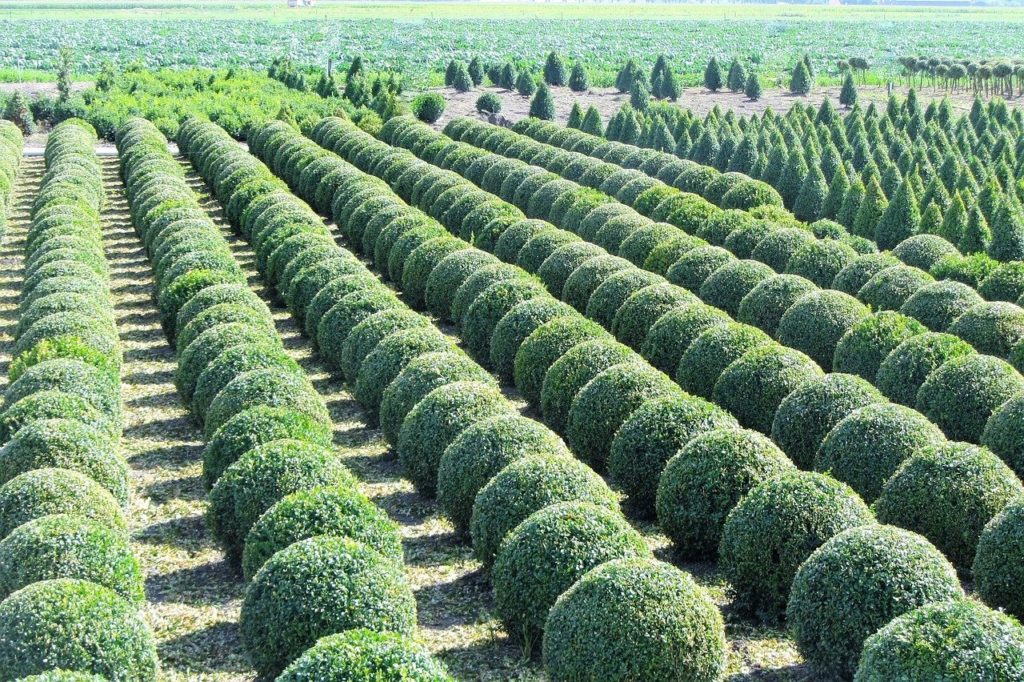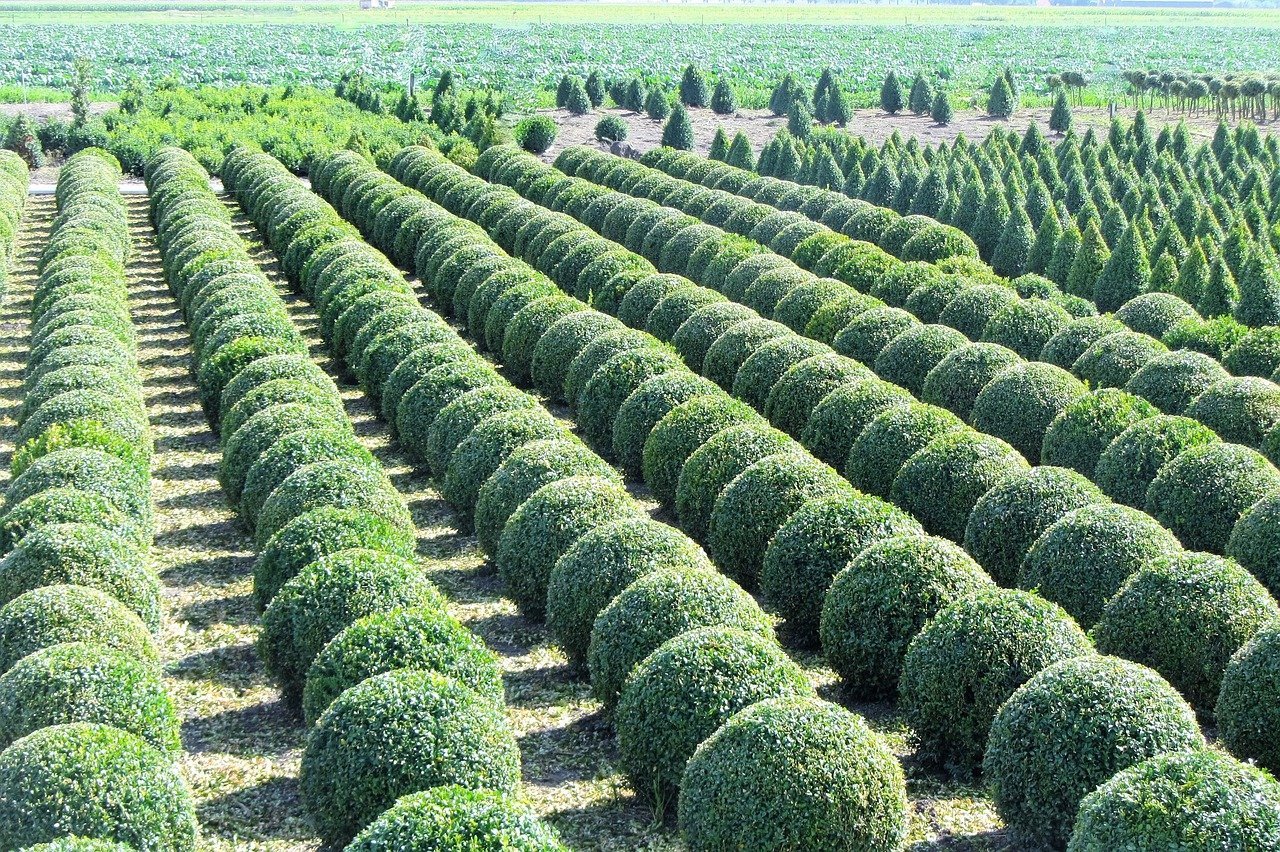
Boxwood Shrubs
Why You Should Plant Them & How to Care For Them
Boxwood shrubs for cold climates are one of the easiest, and most sought after shrubs to add to any landscape. These shrubs add structure and a manicured look without needing to be heavily maintained. Best of all, they offer year round color as these cold hardy evergreens keep their foliage, and offer a deep green color during the winter. They take many different forms, as some are spherical, and others are conical. Their height and spread vary depending on the boxwood species, making them perfect for hedges, topiaries, or simply as a specimen shrub. With so many types to choose from, 160 to be exact; there is a boxwood shrub type for every garden. But when living in very cold climates, which type is right for you? And how does one care for, and maintain this versatile shrub? Keep reading.
The hardiest of all boxwoods
There are two boxwood types that are hardier than any other boxwood. Buxus sinica var. insularis and Buxus microphylla. These boxwood species are not only cold hardy, but also take well to pruning, making them great options for anyone that enjoys shaping them into topiaries. Although Buxus sempervirens ‘English Boxwood’ is said to have a cat liter box odor, the varieties mentioned above, and in more detail below, do not share this attribute.

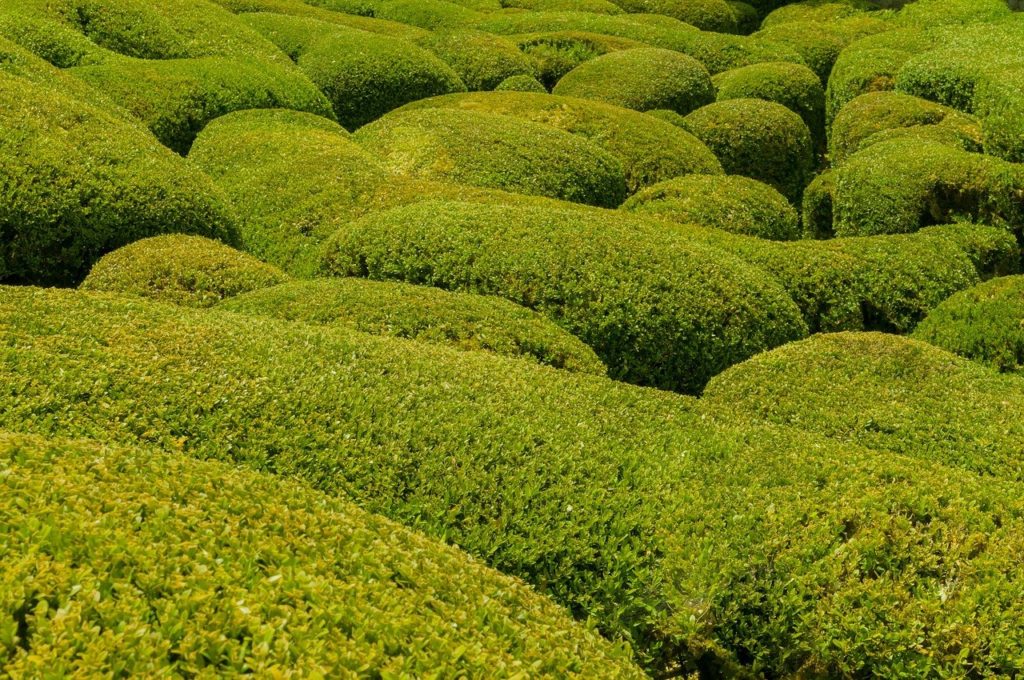
Buxus sinica var. insularis ‘winterGreen’
A fantastic cultivator for colder climates, ‘Wintergreen’ boxwood is hardy down to zone 4, and keeps its deep green color in the winter months. It takes well to pruning, but typically maintains its mounded shape if left unpruned. It blooms fragrant tiny yellow flowers in the spring, and thrives in full sun to partial shade. The shrub reaches 3-4ft tall, and spans 3-5ft wide. The hardiest of boxwoods, ‘Wintergreen’ makes for an excellent hedge or a single specimen shrub. With very minimal maintenance needed for the shrub to perform, ‘Wintergreen’ is a great option for cold climate gardeners looking for an evergreen to add all season interest.
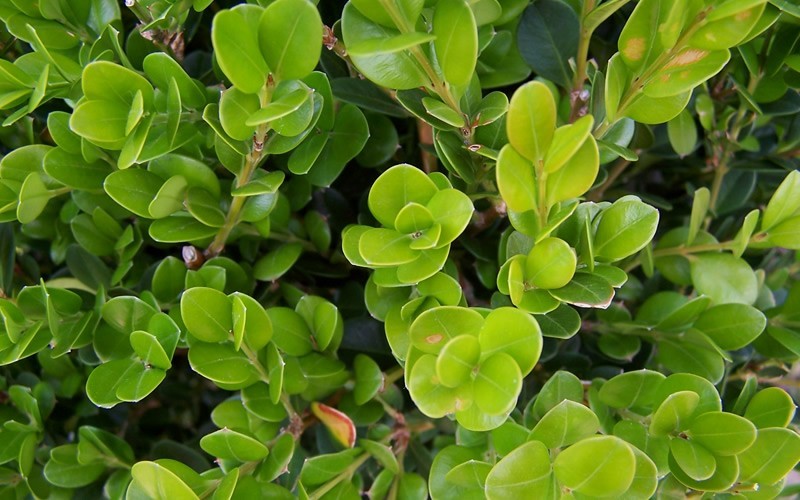
Buxus sinica var. insularis ‘Nana’
Commonly called the Korean True Dwarf Boxwood, Buxus sinica var. insularis ‘Nana’ is a short boxwood that reaches 30 inches tall and up to 48 inches wide. It’s very cold hardy as it can withstand temperatures as low as -30 °F. Like the ‘Wintergreen’ boxwood, Nana blooms tiny yellow flowers in the spring that are fragrant. It thrives in morning sun with dappled afternoon shade. Because it’s a slow grower, its best used for short hedges, or as a single specimen plant to fill in a space needing a smaller evergreen. For the more tranquil gardener, the ‘Nana’ makes a great small bonsai tree.
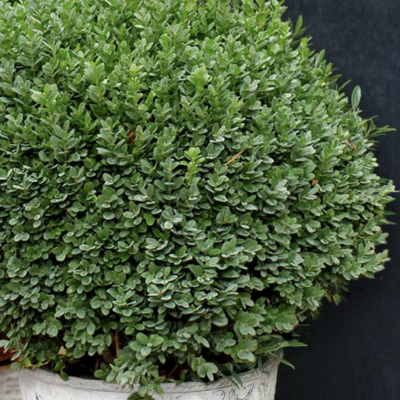
Buxus microphylla var. japonica ‘Winter Gem’
Coming in at 2ft-3ft tall and wide, the ‘Winter Gem’ boxwood is second hardiest to the insularis variety. It’s hardy down to zone 5 making it an excellent option for a cold tolerant evergreen shrub in the landscape. The foliage bronzes slightly in the winter months, but returns to its emerald green shade in the warmer months. The new growth in the spring is a lighter lime green shade that turns dark green as the foliage matures. Because of their shallow roots, mulching is necessary with this boxwood. Full sun to part shade allows it to thrive and it takes to pruning well. It’s best used as a low hedge. With average watering needs, it has a relatively low maintenance threshold.

Buxus ‘Glencoe’ Chicagoland Green
If you’re looking for a shrub that won’t bronze in the winter, with the ability to really withstand Midwest winters, the ‘Glencoe’ Chicagoland Green boxwood is the heavy weight champ you want. Growing two to three inches per year, this slow grower is excellent for a low hedge. It’s uniform oval habit keeps it looking manicured between pruning, and it retains it’s glossy green foliage in the coldest months. Along with other boxwood specimens, the ‘Glencoe’ Chicagoland Green boxwood can be used for hedges, boarders, containers, or as a topiary. With a compact growth habit and hardy down to zone 4, it’s no wonder it’s a favorite for landscape professionals in colder climates.
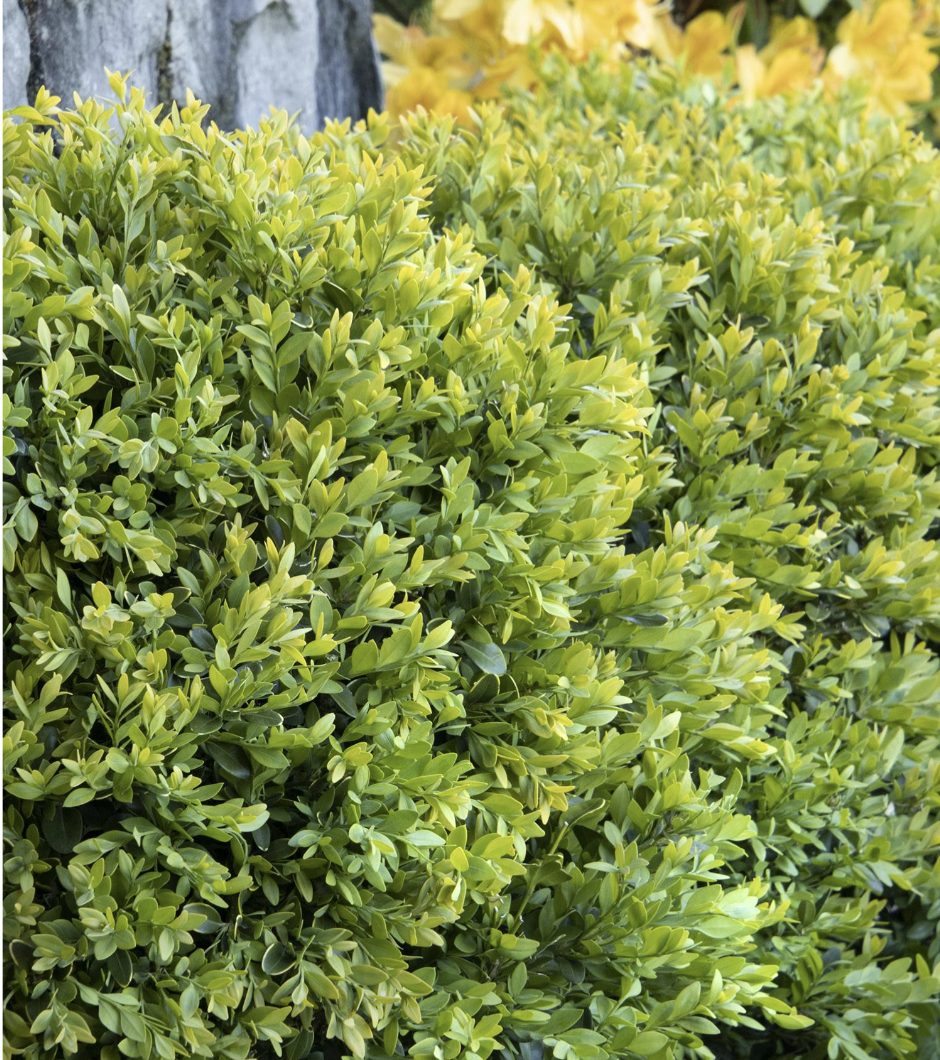
How to Plant
A frequent mistake made by gardeners is planting these shrubs too deep. Often times the tag on the plant indicates to plant at ground level, however over time, the plant will settle deeper into the soil. If you can’t see the top 1/8 of the root ball above the soil line, then the shrub has been planted too deeply.
Caring for Boxwood Shrubs
Watering
Caring for these shrubs is rather simple. With moderate watering needs, the best practice is to deeply water these shrubs in the first season of planting, so that they establish strong and deep roots. Because boxwood shrubs have shallow roots that can dry out even with proper watering; mulching these shrubs is going to be very important in keeping moisture locked in and roots from drying out. Watering plants during dry spells of the fall and early winter is also important. This will give the boxwood the moisture it needs to survive the cold months without damage from the stress that comes with the winter.
Thinning
In order to assist in circulation of air in and around the plant, thinning is a maintenance step that must be done to help the plant stay healthy. It also promotes a nice thick outer foliage that gives boxwoods that tidy appearance. Thinning can be performed all year round, and you don’t have to prune too much to offer the benefits that come with thinning the shrub. Avoid thinning too aggressively in the winter months, as this will expose the shrubs foliage to winter injury.
Pruning
Pruning boxwoods can be a tricky task when it comes to colder climates. Depending on the zone you garden in, pruning too early in the spring may expose your shrub to inclement weather. However, waiting too long to prune your shrubs will expose them to hot summer temperatures where they will be scalded by the sun. A good practice to incorporate after pruning your boxwoods is to spray with an anti-desiccant spray. This will keep moisture from leaving the shrub too rapidly. Pruning your boxwood in the spring for a manicured look will especially stress the plant if it’s exposed to hot summer drying winds. Using an anti-desiccant spray and and watering deeply and regularly will keep them happy.
So Why Plant Them?
Boxwood shrubs offer a nice uniformed look to a landscape with very little maintenance. They offer summer interest, keep their foliage, and beautiful green color in the winter when almost everything else in is dormant. This is a welcomed feature for those of us living in much colder climates. With so many varieties to choose from, whether you are in the coldest or warmest of climates, boxwoods are sure to make any garden that much more beautiful.

